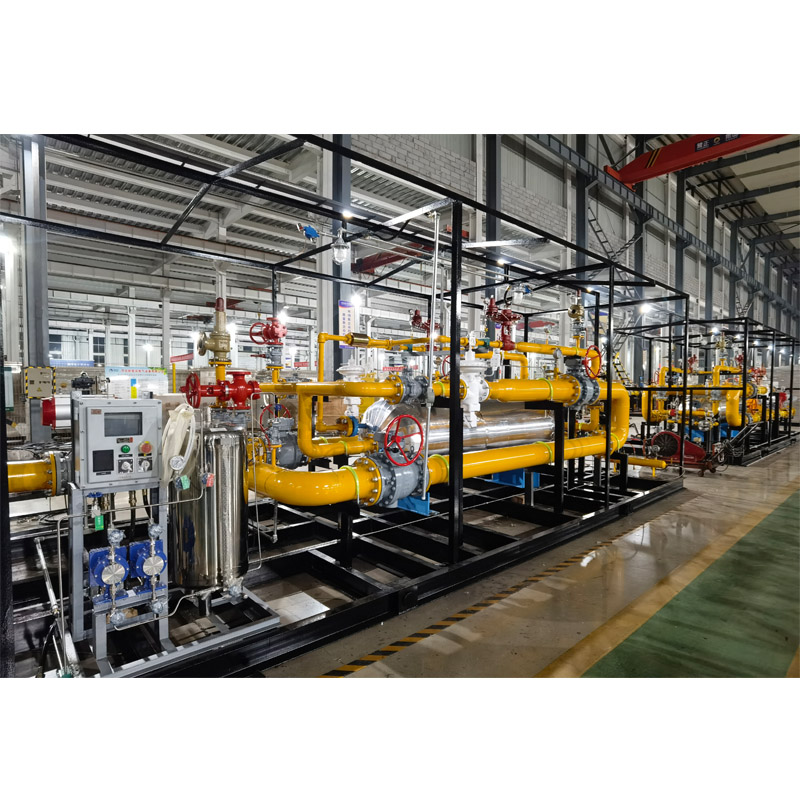
Dec . 04, 2024 16:28
Back to list
pressure reducing regulators
Understanding Pressure Reducing Regulators
Pressure reducing regulators are essential devices used in various industries to ensure that the pressure of gases or liquids remains within safe and efficient operating limits. These devices play a critical role in applications ranging from industrial systems to residential plumbing, contributing to both safety and efficiency in the management of fluid systems.
At its core, a pressure reducing regulator functions by decreasing the high inlet pressure of a fluid to a predetermined, lower outlet pressure. This regulation is vital for systems where excess pressure could lead to equipment damage, leaks, or even hazardous situations. For instance, in gas distribution systems, regulating the pressure ensures that end-users, such as households and businesses, receive gas at safe levels, thereby reducing the risk of explosions and other dangerous incidents.
Principle of Operation
The operation of a pressure reducing regulator is based on a balance between the inlet and outlet pressures, aided by a mechanical spring mechanism. When the upstream pressure exceeds the set point, the diaphragm within the regulator moves, allowing the excess pressure to vent through an exhaust port. Conversely, if the outlet pressure drops below the desired level, the spring forces the diaphragm back into position, preventing further venting and maintaining the set pressure.
This feedback mechanism allows the regulator to automatically adjust itself in response to fluctuations in flow rate or inlet pressure, ensuring stable pressure at the outlet even under varying operational conditions. This dynamic response is critical in applications such as laboratory settings, where precise pressure control can be crucial for experimental accuracy.
Applications in Various Industries
Pressure reducing regulators find applications across diverse sectors. In the medical field, for instance, they are integral to the administration of gases such as oxygen. Regulators ensure that oxygen is supplied safely at comfortable pressure levels for patients, which is vital in critical care situations.
In industrial settings, these regulators are used in processes involving welding, cutting, and chemical manufacturing, where precise gas flow and pressure control are vital for safety and efficiency. They also play a role in maintaining optimal performance in pneumatic and hydraulic systems used in manufacturing machinery.
pressure reducing regulators

In the gas distribution sector, these devices are critical components of the infrastructure that delivers natural gas or propane to consumers. They help maintain consistent pressure levels, thus ensuring that appliances function safely and effectively.
Considerations When Choosing a Regulator
When selecting a pressure reducing regulator, several factors must be considered
1. Pressure Range Understand the application's pressure requirements, including both inlet and outlet pressures. 2. Flow Rate Different regulators are rated for specific flow capacities. Ensure that the chosen regulator can meet the flow needs of the system.
3. Media Compatibility The materials used in the construction of the regulator should be compatible with the fluid it will regulate to avoid corrosion and leaks.
4. Temperature Ratings Consider the operating temperature of the application, as extreme temperatures can affect regulator performance.
5. Safety Features Look for regulators with built-in safety features, such as pressure relief valves, which can help prevent over-pressurization.
Conclusion
Pressure reducing regulators are unsung heroes in many industries, providing a critical function that enhances safety, performance, and reliability in fluid management. As industries continue to innovate and demands for precision in operations grow, the role of these regulators will likely expand, leading to further advancements in their design and functionality. By understanding how these devices operate and the best practices for their selection and maintenance, businesses and individuals can ensure optimal performance in their systems, safeguarding their processes and enhancing operational efficiency.
Next:
Latest news
-
Safety Valve Spring-Loaded Design Overpressure ProtectionNewsJul.25,2025
-
Precision Voltage Regulator AC5 Accuracy Grade PerformanceNewsJul.25,2025
-
Natural Gas Pressure Regulating Skid Industrial Pipeline ApplicationsNewsJul.25,2025
-
Natural Gas Filter Stainless Steel Mesh Element DesignNewsJul.25,2025
-
Gas Pressure Regulator Valve Direct-Acting Spring-Loaded DesignNewsJul.25,2025
-
Decompression Equipment Multi-Stage Heat Exchange System DesignNewsJul.25,2025

